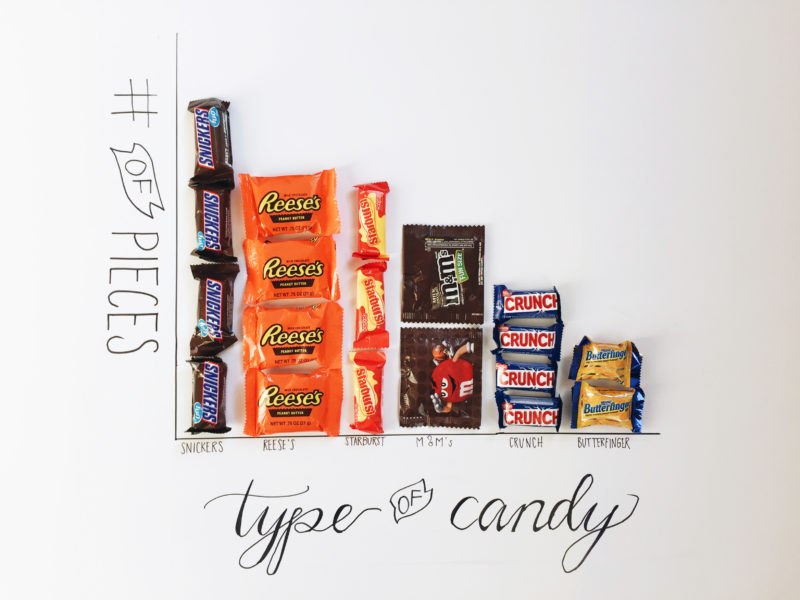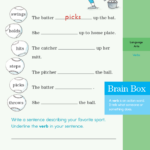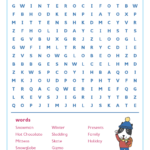Halloween candy doesn’t have to be all about the sugar rush. Why not transform your kids’ haul into a fun (and delicious) learning experience by introducing simple math concepts into the equation? Here are a few sample problems you can tackle together this year.

Graphing
You brought home a bounty of candy this Halloween. But now you want to know exactly what’s in your bag. Dump out all your candy, and make a bar graph so that you can visualize the whole haul. Your X-axis should be “Types of Candy,” and your Y-axis should be “Number of Pieces.” Stack pieces above their type to compare the height of each bar, and how many of your favorites you received. Mark down the number of each type on a piece of paper, and take a picture of your bounty to commemorate it. Then, you can put the candy back in the bag to showcase probability.
Probability
After looking at your bar graph, let’s say that you counted 7 Snickers, 10 Smarties, 6 Twix, and 5 Reese’s, and 2 Jolly Ranchers, but you only really care about Reese’s. What’s the likelihood of you pulling your favorite candy on your first blind try?
First, add up how many pieces of candy you have in total:
7 + 10 + 6 + 5 + 2 = 30 pieces
When you are trying to figure out the probability of an event (pulling a Reese’s out of the bag), you need to use a ratio to find out how likely it is that the event will happen.
Probability = number of favorable outcomes/number of possible outcomes
So in this case,
Probability = Pieces of Reese’s/Total Pieces of Candy
P = 5/30
P = 1/6, or about 17%
Weights
How much does your bag weigh if you have the 30 pieces of candy mentioned above, and you know that:
Snickers weigh 16g
Twix weigh 25g
Reese’s weigh 20g
Jolly Ranchers weigh 5g
Smarties weigh 7g
(7 x 16) + (6 x 25) + (5 x 20) + (2 x 5) + (10 x 7) = Total Weight
112 + 150 + 100 + 10 + 70 = 442g of candy (holy smokes!)
EXTRA CREDIT
You’ve got a ton of small m&m packages in your candy bag, but you want to know how many of the fun-sized packages equals one full-sized package of m&ms.
One full-sized m&m package = 47.9g
One fun-sized package of m&ms = 40g
Not so fun-sized after all, huh?
To find the number of fun-sized packages you’d have to eat to equal one full-sized one, you have to determine the ratio of fun-sized to full.
To do this, you divide the full by the fun-sized:
47.9/40 = about 1.2
So you’d have to eat 1.2 fun-sized m&ms to equal one full-sized package.





No Comments